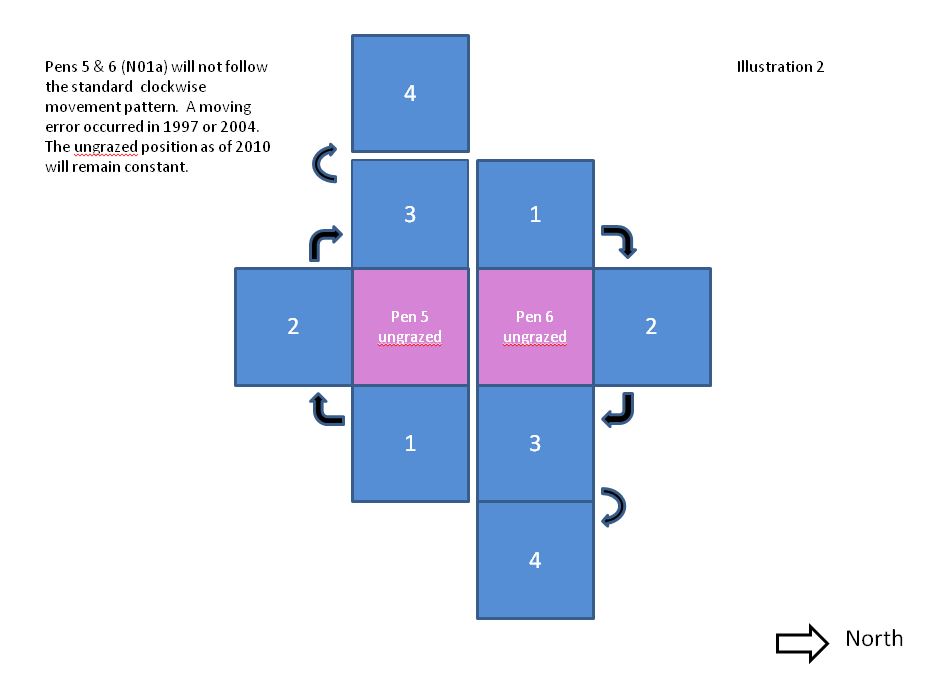Location of Sampling Stations: There are four exclosures on Florence soils and four exclosures on Tully soils in each of the following grazed watersheds: N01a, N01b, N04a, N04d (total= 32). Exclosures in N01a and N04a were erected in March, 1988 and were first sampled in 1992. Exclosures in N01b and N04d were erected in April, 1992 and were first sampled in 1995.
Frequency of Sampling: Once per year at peak biomass (September to October).
Variable Measured: Aboveground biomass of grass, forbs and woody and p.dead.
Methods: An exclosure is 5m x 10m and constructed of fence posts and sturdy cattle paneling. One half (5m x 5m) has been designated as the permanently ungrazed treatment; it has not been grazed since 1988 (N01a & N04a) or 1992 (N01b & N04d). It is marked with pink poles. The other half is the grazed section; it is marked with blue poles. Every six years a new grazed area is closed off and animals will not have access to this section for six years. At the end of six years, this section will be reopened to grazing and a new section is closed off. The 'grazed' section moves in a clock-wise pattern around the permanently ungrazed section. The 'grazed' sections were moved in late spring of 1997, 2004 and 2010.

Sampling methods are identical to PAB01 except five 0.1 m2 plots randomly located within each section, grazed vs. ungrazed; total of 10 samples per exclosure. Grazed and ungrazed sides of the exclosure are clipped at the same time. The plant biomass for each clipped plot is bagged, dried at 60oC and then fully sorted to live (grass), forb, woody and p.dead components. The samples are then dried again at 60oC and weighed. Samples are not kept for further analysis. Maps available in Bushnell 207.
Summary of All Changes:
ORIGINAL METHODS: The 'grazed' section used to be temporary. It was erected adjacent to the each permanently ungrazed exclosure at the beginning of the growing season and remained in position until peak biomass occurred. The temporary grazed exclosure was removed immediately following clipping.
1992: for all plots 'lvgras' = live grass + sedge + current year's dead
1994: for N04a plots = no previous year's dead component due to wildfire on 3-31-94
2001: Current year's dead (c.dead) no longer separated from 'live'.
2003: Sample size reduced from nine samples per side (9 ungrazed & 9 grazed) to five per side.
2010: During the 1997 or the 2004 move of the grazed section of pens 5 and 6 (lowland N01a), the UNgrazed section of both exclosures were misidentified. As a result, the two UNgrazed sections were placed next to one another. It is no longer possible to move the grazed section in the same manner as all other pens. To compensate for this 'lost' fourth position, it was decided to move the grazed section away from the ungrazed section for this rotation. The UNgrazed section as of 2004 will remain as the permanently ungrazed area. See PEB01 illustration 2.
March 2016: All 'grazed' sections were moved.
For additional metadata information see: http://lter.konza.ksu.edu/sites/default/files/DC.pdf
For additional methods information see: http://lter.konza.ksu.edu/sites/default/files/MM.pdf